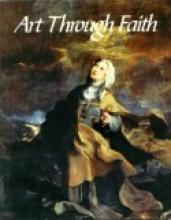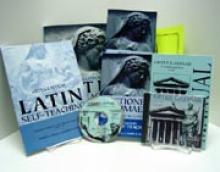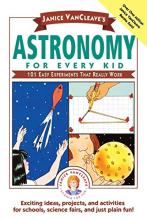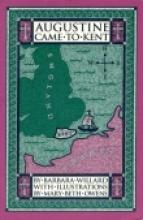No name
Art Through Faith
This Catholic Art text, intended for the eighth grade, offers thirty-six weeks of lessons in art appreciation, with an emphasis on religious art. The text presents 152 images (in full-color on glossy paper) which cover many of the basic schools and famous artists (in chronological order). Descriptions offer biographical sketches of famous artists, explanations of various art forms (such as icons, mosaics, statuary, church architecture, etc.) Although the focus is on religious art, there are a few non-religious subjects as well, such as the cave paintings from Lauscaux, France and The School of Athens by Raphael.
Although the book is intended for eighth grade, it is the sort of book that could be used for a family-wide art study. My five year old son, who is quite the art afficianado, enjoys paging through the book. When asked for a quote about the book, he had this to say: "The pictures are really colorful. It has a Michelangelo picture in it. There's a picture by Leonardo da Vinci in it. There's one by Raphael called The School of Athens. I like it."
Copyrights 1996/1999
Artes Latinae: Level 1
In two formats: CD ROM or workbook with audio tapes
Traditional format includes: Level 1, Books I and II, 15 cassette tapes, Teacher's Manual, Graded Reader, Teacher's Manual for the Graded Reader, Reference Notebook (consumable), Test Booklet (consumable), and Guide to Tests
CD ROM format includes: CD-ROM (Equivalent to Level I, Books I and II and the 15 cassette tapes), Manual, Graded Reader, TM Graded Reader, Reference Notebook (consumable), Test Booklet (consumable), Guide to Unit Tests
Artes Latinae has been called the cadillac of Latin curriculums, and if the quality of the program doesn't convince you of that, the price will. At nearly three hundred dollars for Level 1 (equivalent to one year of college Latin, or two years of high school), it's easily one of the most expensive ways to study Latin. Is it worth it? Absolutely.
If you want a Latin program that's self-paced, self-guiding, accurate, thorough, and which will leave your children in command of Latin rather than just having dabbled in it, and which works well even if you have no Latin background yourself, Artes Latinae may be just the thing. By the end of Level One, the student will be at ease with all the noun cases and verb tenses; relative, interrogative, and personal pronouns; and have committed to memory over a hundred "basic sentences" from classic Latin texts exemplifying the various points of grammar.
Instruction is based on Dr. Sweet's revolutionary structural method of teaching Latin grammar. Instead of memorizing vocabulary and learning rules of grammar which are then applied to the translation of Latin sentences, students learn to read the way real Latin-speakers did. Each sentence is approached as a sequence of empty "slots," and the reader identifies the correct word to fill the slot by recognizing the signal of the word ending.
Thus, for instance, a reader aproaching the sentence "Hilarem datorem diligit Deus" begins with the framework "Someone blanks something"; recognizes the "-m" ending which signals an accusative noun, and thinks "Someone blanks a cheerful giver"; then recognizes the "-t" signal for a present active indicative verb, and thinks "Someone loves a cheerful giver"; and so on. By contrast, the traditional method of reading Latin (as described for instance in the classic Wheelock's Latin text) calls for searching the sentence for the subject and its modifiers, then for the verb and its modifiers, and so on; in other words, forcing the signals of English grammar (i.e. word order) onto a language that does not use them.
One consequence of the structural method of learning Latin is that Artes Latinae does not track any other Latin program in sequence, making it difficult to switch to a different program in midstream. Other programs such as Latina Christiana may however be easily used as supplementation should you want more Christian content such as prayers or hymns. While Artes Latinae teaches classical Latin, the CD-ROM version offers a choice of classical or ecclesiastical pronunciations, and the voluminous supplementary readings in the accompanying reader include medieval as well as classical selections. The reader also provides supplementary vocabulary, as the basic program (CD-ROM, or workbooks plus tapes) focuses more on mastering grammar than memorizing vocabulary.
Ask Albert Einstein
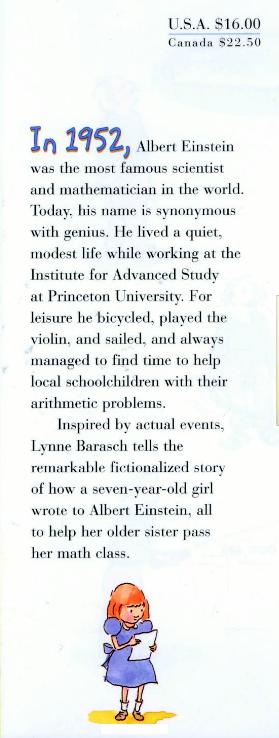
So maybe your elementary school age child will not learn much Math with this book--the one problem shown involves the Pythagorean theorem and it shows the external tangent line touching two circles--but she may learn a few related things: who is Albert Einstein, why he came to America, where he worked and study, ... and how he actually helped some kids with their Math homework!
My husband enjoyed the allusion to Archimedes in Annabelle's bathtub scene... and my favorite pages in the whole book are the inside pages of the front and back covers: Einstein's own quotes each illustrated with adorable drawings of Einstein doing all sort of things. Here are a couple: "When the solution is simple, God is answering," and. "Joy in looking and comprehending is nature's most beautiful gifts." A very cute story, based on real events, this book enchanted our 10 year old Math-challenged artistically oriented student.
Astronomy for Every Kid
Offering "Exciting ideas, project, and activities for schools, science fairs, and just plain fun," this book is one in a series that is very popular with homeschoolers (and understandably so). The book covers seven major topics - Planets, Space Movement, The Sun, The Moon, The Stars, Space Instruments and Space/Space Travel. Each experiment uses simple experiments and explains (briefly) the purpose, the procedure, the expected result and a brief but very understandable explanation of why it happened. Black and white sketches illustrate each experiment as well. To give you an idea of the kind of material that is covered, here are a few of the experiment descriptions/purposes (out of 101 total):
- "To determine how color affects a planet's surface temperature"
- "To demonstrate a method of proving that the Earth rotates"
- "To determine why planets move smoothly around the Sun"
- "To simulate aiming a spacecraft for the Moon"
- "To determine why stars appear to rotate"
- "To determine why radio wave receivers are curved"
I found the "why" segments of each experiment helpful background reading for me to brush up on my science knowledge.
Augustine Came to Kent
Augustus Caesar's World
Note from the Webmaster: A number of Catholic homeschool parents have commented that the book has some problematic sections of a secular nature - soft on paganism, etc. It may well be a worthwhile book, but should only be used with a reasonable amount of caution and parental supervision.
Baby Mozart
More annoying than the CD, however, is the video. The video takes the same watered-down music and combines it with images of moving toys that make their way across the screen. (This goes on for about half an hour, I believe. I haven't been able to sit through the whole thing.) The end of the video provides information on where to buy the toys. The toys aren't particularly beautiful or educational - just rolling toy animals, jack in the boxes, etc. I can't deny that my younger children enjoyed watching the video, but children like a lot of things that aren't necessarily all that great for them. I'd much rather have my children playing with pots and pans in the kitchen than be mesmerized by videos of toys and Mozartish music. I also object to the idea that this company charges money for what seems to be little more than a fancy toy catalog.
Additional information (added September 2007): TIME Magazine article on studies involving "educational" videos for babies
Disney demands retraction of Baby Einstein study
Are "Educational" Baby Videos a Scam?
Baby Whales Drink Milk
A nice picture book which introduces basic facts about whales and what they are: mammals rather than fish. Includes nice pictures (with some beautiful scenery) and informative text.

